| Lesson 7: History of DLTtape™ Technology | |
| The history of DLTtape™ technology is briefly described below: | ||
| 1984 | ||
| Digital Equipment Corporation designs and builds the TK50 tape drive to serve as the backup system for it's new Micro VAX II workstation. The TK50 uses the same ½-inch magnetic tape stock used in reel-to-reel tape drives, but stores it on a single supply reel inside a 1 inch x 4.1 inch square plastic cartridge. The tape take-up reel is located inside the TK50 drive. This new tape drive fits into a full-height 5.25 inch drive bay in the MicroVAX II workstation and stores 94MB of data on a single tape cartridge. |
Standalone TK50 Drive and Cartridge |
|
| 1987 | ||
| Digital upgrades the TK50 to the TK70, which is capable of storing 294 MB of data on the same square tape cartridge. This was accomplished by increasing the number of read/write tracks from 22 to 48, thereby increasing the density of data written to tape. |
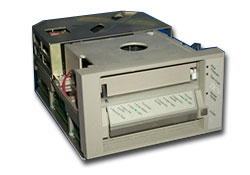 TK70 Drive |
|
| 1989 | ||
|
Digital introduces the TF85, later called the DLT 260 which stores 2.6 GB of data on a ½ inch tape cartridge with 1,200 feet of tape. This 1,200 foot cartridge is initially called CompacTape™ III, and later becomes known as DLTtape™ III. The nearly tenfold capacity increase over the TK70 (294 MB to 2.6 GB) is largely due to the TF85's six-roller head guide assembly which precisely moves tape past the read/write head, enabling an increase of track density from 48 to 128 tracks across the ½ inch wide tape. The TF85 tape drive is also equipped with an additional write element on the read/write head which results in higher data transfer rates and improved error correction. |
TF85's Six-Roller Head Guide Assembly |
|
| 1991 | ||
| Digital introduces the TF86, which later becomes known as the DLT 600. It offers 6GB of storage capacity on the same 1,200 foot DLTtape III cartridge. The new drive is read/write compatible with the TF85 tape drive. | ||
| 1993 | ||
| Digital introduces the TZ87, now known as the DLT 2000 tape drive. This drive is capable of storing 10 GB of data on a single DLTtape III cartridge. The DLT 2000 also offers 2 MB of read/write data cache memory, and a data transfer rate of 1.25 MB/s. |
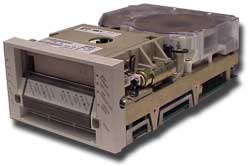
|
|
|
|
| 1994 | ||
| Quantum Corporation of Milpitas, California, acquires the disk and tape divisions of Digital Equipment Corporation, and within the tape division, the DLTtape technology. |
DLT Technology is acquired by:
|
|
| 1994 (late) | ||
| Quantum introduces the DLT 4000 tape drive. This drive uses the newly introduced DLTtape IV cartridge which has an increased density of bits per inch (from 62,500 to 82,000), and an increase in tape length (from 1,200 feet to 1,800 feet). The DLT 4000 drive can store 20 GB of data on a single DLTtape IV cartridge and has a transfer rate of 1.5 MB/s. The new drive is also read/write compatible with previous generations of DLTtape drives. |
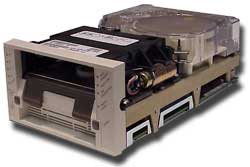
|
|
|
|
| 1995 | ||
| Quantum introduces the DLT 2000XT which is an "extended tape" version of the DLT 2000. This new drive has a native storage capacity of 15 GB of data using the 1,800 foot DLTtape IIIXT cartridge. |

|
|
|
|
| 1996 | ||
| Quantum introduces the DLT 7000 tape drive which has a native storage capacity of 35 GB on the 1,800 foot DLTtape IV cartridge. The new DLT 7000 drive has a four-channel head which is capable of transfer rates as high as 5MB/s. |
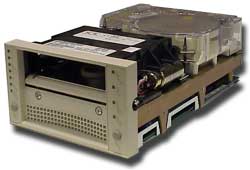
|
|
|
|
| 1999 | ||
| Quantum introduces the DLT 8000 tape drive with a native storage capacity of 40 GB and transfer rates to 6 MB/s, using the same DLTtape IV cartridge as it's predecessors. |
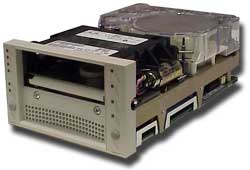
|
|
|
|
| 2001 | ||
| Quantum introduces it's latest DLT technology known as Super DLTtape (SDLT). This new technology delivers a native capacity of up to 110 GB on a single cartridge and a 11MB/s data transfer rate. SDLT is backward read compatible with DLTtape IV cartridges written on DLT 4000, DLT 7000, and DLT 8000 tape drives. |
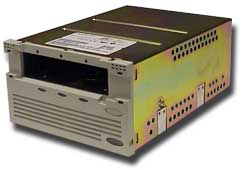
|
|
|
|
||